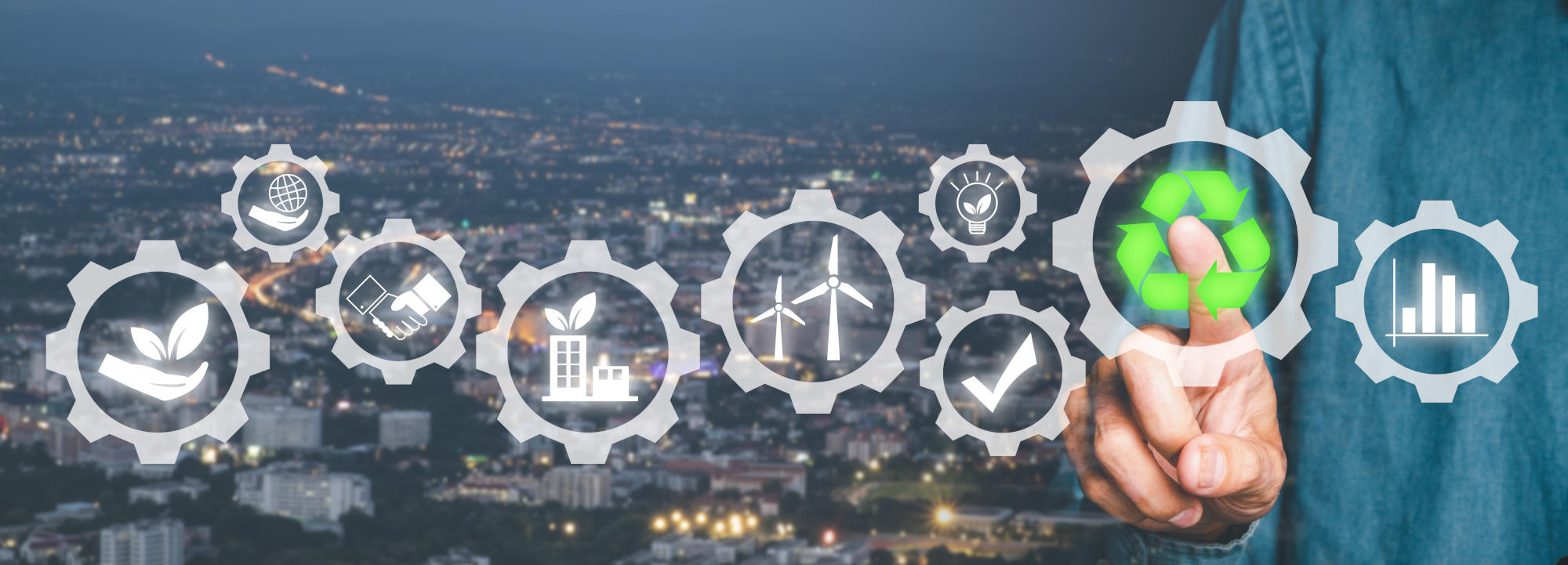ESG Integration and Values-Based Investment

This webinar, led by Professor Vanina Farber, elea Chair of Social Innovation and Jaume Iglésies, Head of UBS WM Sustainable Investing Advisory appeared live on Wednesday, 13th May at 11am CEST. Whereas previous webinars in the elea series focused primarily on investments in private markets, this webinar focuses on sustainable investments (SI) in the public equity and debt markets.
How do environmental, social and governance (ESG) criteria impact investment decisions? Do these criteria still count in times of crisis and if so, how much so? Professor Vanina Farber and Jaume Iglésies delve into sustainability investing as it stands today.
Professor Farber defines SI as “an investment strategy that incorporates ESG considerations into the investment decision. We want to know the impact of these criteria on your portfolio.”
To begin the webinar, Vanina Farber asks participants if they would like their retirement/pension fund to use a sustainable investing strategy. Over half of participants say “yes, because it will likely enhance returns in the long term.”
Commenting on this, Jaume Iglésies finds that while very advanced, this thinking isn’t yet reflected by the average client.
“But we’ve seen a huge jump in the last ten years from ESG being somewhat marginal to now being found all over the place.”
At UBS, sustainability investing needs to generate more than financial performance. There’s a growing number of clients who want their investments to reflect certain values or considerations that are important to them, be it climate change, gender equality or social inequality.
“Sustainability investing is certainly not a niche market anymore, with more than a third of all investing today being considered sustainability investing,” explains Jaume Iglésies.
He says it has become standard practice for requests for proposals (RFPs) from investors to include questions about sustainable investing: is it part of what you do as a financial institution? How you do it? And, demonstrating your track record.
“In most western European countries, you can’t get around RFPs from a large investor without addressing ESG topics,” says Jaume Iglésies.
In categorizing UBS clients into three broad groups based on how they react to sustainability investing, Iglésies shares how 15-25% of clients are in the “Yes, finally!” category i.e. they are actively seeking sustainability investing opportunities and have been waiting for a financial institution to put forward the corresponding proposals.
The “Why not?” clients, according to Iglésies, are those who need to be convinced. They are open to SI if three main conditions are met: (1) performance is at least as good as conventional investing; (2) it won’t cost more to invest in SI; and (3) it’s easy to invest in SI.
“Return expectations on sustainability investing are going to be in line with conventional investing. There’s no reason to believe that it’s going to be lower. In fact, the oldest social investing index, the KLD400 has even outperformed the S&P 500 from when it was created 30 years ago.”
“Companies that have good corporate governance, good risk management, treat their employees well and have good client relationships are more likely to be sustainable – all these things seem to reward investors.” In essence, ESG performance can serve as a proxy for a well-run company.
But what’s the best way to begin the conversation with a client who has not previously been exposed to SI? Jaume Iglésies warns against the temptation to begin by trying to make an emotional connection with your client first.
“You’re going to end up having a super nice, almost intimate conversation with your client but they’re immediately going to put SI in the ‘UNICEF+’ bucket. Once that happens it’s almost impossible to have a discussion around risk, returns or diversification.”
“When I talk to relationship managers at UBS, I recommend trying to make the economic case first, explaining that this is a sound investment strategy, that has its own merits and that we believe will deliver good returns. The additional benefits will unfold naturally.”
“Clients understand that investing in a company that makes products and services that benefit society is better than investing in a coal company. Or that investing in a company that researches renewable energy is better than investing in a highly polluting oil company.”
Participants asked if applicability of ESG criteria on investments is becoming more of a trend in other parts of the world apart from Europe. Jaume Iglésies explains that there is an increasing footprint in Asia, the Americas and emerging markets.
“We like to do engagement of SI in emerging markets. You get more bang for your buck,” he says. The potential for SI is enormous in the diversity and breadth of opportunity in emerging markets but there are also more risks.
Jaume Iglésies answers a number of questions about how performance of SI is measured at UBS as well as examples of the methodology for applying ESG criteria to SI. He also makes a number of important comments on how the COVID-19 crisis has impacted SI.
In terms of key takeaways, Jaume Iglésies reminds us:
“SI is here to stay. People want to give a sense of purpose to their investments. Instruments now exist on the market to do this so we only see SI growing in the future.”
To find out more about upcoming webinars from the elea Center for Social Innovation, please visit the Center’s page here.
Research Information & Knowledge Hub for additional information on IMD publications

Subsidies of renewables has led to electricity prices frequently falling to less than zero leading to opportunities for consumers

Once corporate activists, today’s CSOs are business integrators. 6 ways the CSO role is evolving: strategist, risk mitigator, innovator, regulator, storyteller, and leader.

AI is revolutionising industry by improving efficiency and driving sustainability. Discover how data-driven insights shape a greener future

Chanel Global CFO and IMD Executive in Residence Philippe Blondiaux explains how finance leaders can sustain a long-term focus on sustainability while addressing short-term challenges.

Discover a framework for Responsible Leadership, guiding you to lead with care and ethics in an increasingly turbulent and complex world.
The case examines the entrepreneur-led carve out and buyout of dss+, DuPont’s safety and sustainability consulting division, by Gyrus Capital and dss+ management team. dss+ (formerly “DuPont Sustainable Solutions”) played a pivotal role in high-ri...

The need to protect nature is a challenge for all companies. But do you know the potential business benefits of a successful biodiversity strategy? Take this short quiz to test your knowledge of the issue, and read on for a five-step guide to gett...

Leaders, strategists, and decision-makers can play a pivotal role in integrating sustainability into business strategies – and make money in the process. Knut Haanaes, Bryony Jansen van Tuyll, and Øystein D. Fjeldstad outline five steps to make it...

AI can enhance sustainability reporting and help you deepen green efforts – but it also has an environmental impact of its own. Julia Binder and José Parra Moyano identify the four ‘hows’ of harnessing AI for enhanced sustainability reporting and ...

No single leader or business function can drive progress toward net zero. Knut Haanaes identifies six ways in which CHROs can help drive organizational change.
Research Information & Knowledge Hub for additional information on IMD publications
in I by IMD
Research Information & Knowledge Hub for additional information on IMD publications
in I by IMD
Research Information & Knowledge Hub for additional information on IMD publications
in I by IMD
Research Information & Knowledge Hub for additional information on IMD publications
in I by IMD
Research Information & Knowledge Hub for additional information on IMD publications
Case reference: IMD-7-2639 ©2025
Research Information & Knowledge Hub for additional information on IMD publications
in I by IMD Brain Circuits 24 February 2025
Research Information & Knowledge Hub for additional information on IMD publications
in I by IMD Brain Circuits 17 February 2025
Research Information & Knowledge Hub for additional information on IMD publications
Research Information & Knowledge Hub for additional information on IMD publications
Research Information & Knowledge Hub for additional information on IMD publications


